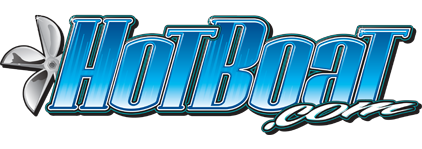Sorry it took so long for me to answer this. I don't venture to the v drive forum much because it tends to be dead here.
Unforgiven is part right, part wrong. Sorry Ed.

He is 100% dead on about the cracking. If a strut is going to crack or fail, it will start at the front of the strut where it is tapered to a sharp edge. I try to minimize that as much as possible, and as short a taper as possible, but its still pretty damn thin there.
But there is no forward thrust at all in the strut, and 99% of the forces it sees is upward and pretty even across the length of strut barrel. A little bit more towards the rear due to the prop being on that end, but its pretty even across the strut barrel. The wear of the bushing shows the forces, and they are almost entirely at the upper part of the bushing because the prop is trying to lift the ass end of the boat. On a hydro its entirely on the top side and virtually none anywhere else.
As to why the outdrives are tapered on the back side, and the V drives aren't, its kind of a physics thing, and a damn good thing it works out like this, or outdrives wouldn't work worth a shit.
Look at the bulk of the outdrive above the prop center line. Now compare that to the bulk of the strut above the centerline. Now look at the bulk under the prop centerline of both. Which has the most bulk in front of the prop in each case. The v drive nearly nothing above compared to the outdrive, and zero under the centerline.
The below centerline is where 90% of the work is being done on both cases. Look at a hydro. The prop is half out of the water. Same with a Ilmor, and Merc Nighthawk surface drives and in the right conditions on the right hull, a #6 and 8 Merc, and some Imcos. AND THEY HAUL ASS! At any given point in the prop rotation, the downward ear, to the mid rotation point, is doing much more work that the upward ear(s). Its the downward push that lifts the ass end, on any boat, specially a hydro. If the upward ear did the same work, they would cancel each other, and hydros wouldn't lift, and surface drives would be stuck in the water.
Another reason the bulk above the prop on a V drive means so little and has a little more effect on the outdrives is the number of blades. On a v drive the blade at the top is doing near nothing except thowing water off the perimeter of the blade into the bottom of the boat. It lends very little to the forward motion of the boat. Again, look at hydros. NO blade in the water ot the top at all. Look at the speeds of hydros and surface drives, they don't miss that balde out of the water one bit.
If the upper blade did much, the outdrive would suffer much more than the skinny ass liitle blade the strut has.
So the fact is, the tapered on both ends skeg of the outdrive is effecting the prop more than the blunt back side of the strut on a v drive, because its under the prop centerline where the prop is doing the majority of it forward thrust.
Make sense?







 Reply With Quote
Reply With Quote
Bookmarks